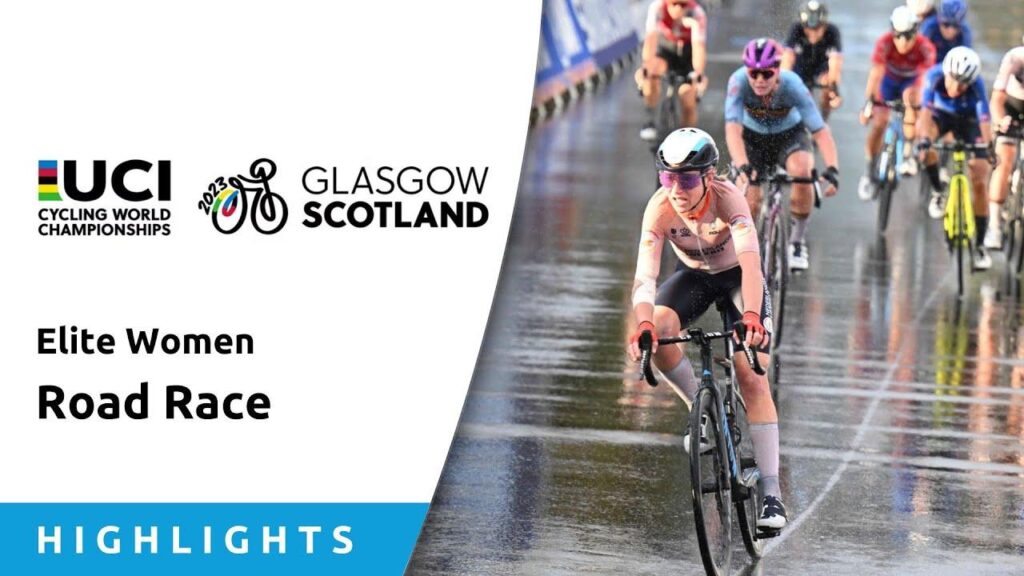Women’s Road Cycling in 2023: A Milestone Year for Progress and Recognition
As the world of cycling continues to evolve, 2023 stands out as a pivotal year for women’s road cycling, a sport that has seen remarkable growth in visibility, participation, and competitive opportunity over the past decade. In her latest article for Ĺ koda We Love Cycling, professional cyclist Kasia Niewiadoma reflects on the strides made by women in the sport, celebrating both historic achievements and the ongoing challenges that remain. From increased investment in women’s teams and events to a surge in grassroots participation, Niewiadoma’s insights illuminate the triumphs and transformations that have defined the landscape of women’s cycling this year. As we look back on the past achievements and forward to the future, this article serves as a testament to the resilience and determination of female cyclists pushing the boundaries of what’s possible on two wheels.
Advancements in Gender Equality: The Revolution in Women’s Road Cycling
In 2023, women’s road cycling stands on the brink of a transformative era, showcasing the remarkable strides made towards gender equality in the sport. The increased visibility of female cyclists has paved the way for significant improvements in sponsorships, funding, and media coverage. Organizations and teams are now prioritizing equity, ensuring that female cyclists receive the same level of support as their male counterparts. This shift is evident in various aspects of the sport, including:
- Equal prize money: Many major races have adopted policies to ensure that women receive the same financial rewards as men.
- Increased race opportunities: The number of professional women’s races has doubled in recent years, creating more platforms for athletes to compete.
- Enhanced media exposure: Major networks are now dedicating airtime to women’s events, showcasing their talent to a global audience.
To further cement these advancements, various initiatives are being implemented to encourage participation at grassroots levels. Cycling federations across several countries are excited about programs aimed at nurturing young female talent, providing them with the necessary skills and confidence to excel in the sport. The Women’s Olympic Cycling program is a case in point, expanding its outreach and introducing mentorship schemes targeting emerging riders. This committed approach is fostering a future where gender equality in road cycling not only thrives, but also inspires future generations to break barriers and redefine the standards of the sport. Key aspects of these initiatives include:
| Initiative | Description |
|---|---|
| Youth Development Programs | Programs aimed at encouraging young girls to engage in cycling. |
| Mentorship Opportunities | Pairing experienced athletes with newcomers for guidance. |
| Increased Accessibility | Efforts to make cycling facilities more inclusive for women. |
Emerging Talent and Competitive Dynamics: The New Faces of Women’s Racing
The landscape of women’s road cycling is evolving rapidly as new, talented riders emerge to challenge the status quo. As the sport gains visibility and supports from various stakeholders, we see a surge of young cyclists who are not only showcasing their skills but also bringing fresh energy to the professional scene. This new generation is characterized by their resilience, creativity, and a commitment to pushing boundaries, often blurring the lines between tradition and innovation in racing tactics. The 2023 season has witnessed remarkable performances from these rising stars, who are eager to make their mark on both national and international stages.
As competition heats up, the dynamics among teams have shifted dramatically. Established teams are under pressure to adapt and evolve to accommodate the influx of talent, leading to strategic partnerships and collaborative training efforts. Factors such as advanced analytics, mental coaching, and technology integration are playing an increasingly vital role in shaping winning strategies. The quest for podium finishes is no longer about individual strengths alone; team synergy and collective tactics are essential in a field that now boasts a more diverse range of competitors. This transformation is not just exhilarating for fans but is crucial in elevating the sport to new heights, attracting a broader audience and increasing sponsorship opportunities.
Building a Supportive Community: How Sponsors and Fans Can Elevate the Sport
As the momentum for women’s road cycling continues to gain traction, the role of sponsors and fans becomes increasingly pivotal. Their support is not just about financial backing; it extends to building awareness, creating visibility, and fostering an environment where athletes can thrive. Sponsors can leverage their platforms to highlight female athletes, showcasing their journeys and accomplishments. This visibility plays a crucial role in breaking down stereotypes and inspiring a new generation of cyclists, amplifying the reach of women’s cycling events through various media and marketing efforts. Furthermore, when sponsors actively engage in grassroots initiatives, they help cultivate local talent and ensure that cycling is accessible to all.
On the flip side, fans are the heartbeat of any sport. Their enthusiasm fuels the athletes and elevates the overall experience of competitions. By attending races, sharing content on social media, and participating in community events, fans can develop a vibrant ecosystem that not only celebrates the sport but also encourages more women to participate. The excitement generated during events can lead to a ripple effect, attracting more sponsors interested in tapping into this burgeoning market. A supportive community creates a sense of belonging and empowerment, making it possible for women in cycling to dream bigger and achieve greater success.
Key Takeaways
As we reflect on the progress made in women’s road cycling throughout 2023, it is clear that the sport has not only gained momentum but has also fostered a sense of community and inclusivity. With athletes like Kasia Niewiadoma leading the charge, the achievements of female cyclists are becoming impossible to ignore. This year has been a testament to the determination and resilience of women in cycling, showcasing both their individual talents and the collective efforts to elevate the sport as a whole.
From increased media coverage to significant advancements in race formats and prize money, the changes witnessed this year signal a promising future for women in cycling. As the sport continues to evolve, the hope is that the momentum will inspire a new generation of female athletes to chase their dreams and push the boundaries of what is possible.
In conclusion, the journey of women’s road cycling is well on its way to breaking barriers and setting new standards. As we look ahead, the cycling world eagerly anticipates the next phases of this exciting transformation, fueled by the determination of its athletes and the unwavering support of fans and sponsors alike. The road ahead may be long, but there is no doubt that women’s cycling is on the rise-and the world will be watching.











